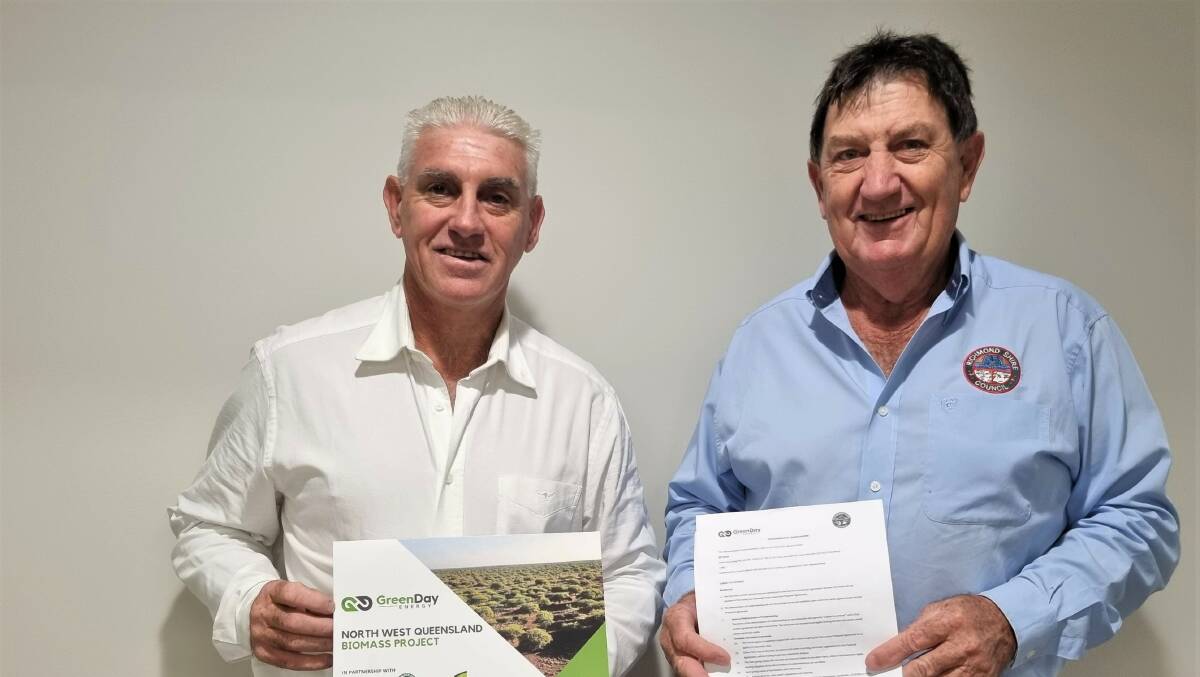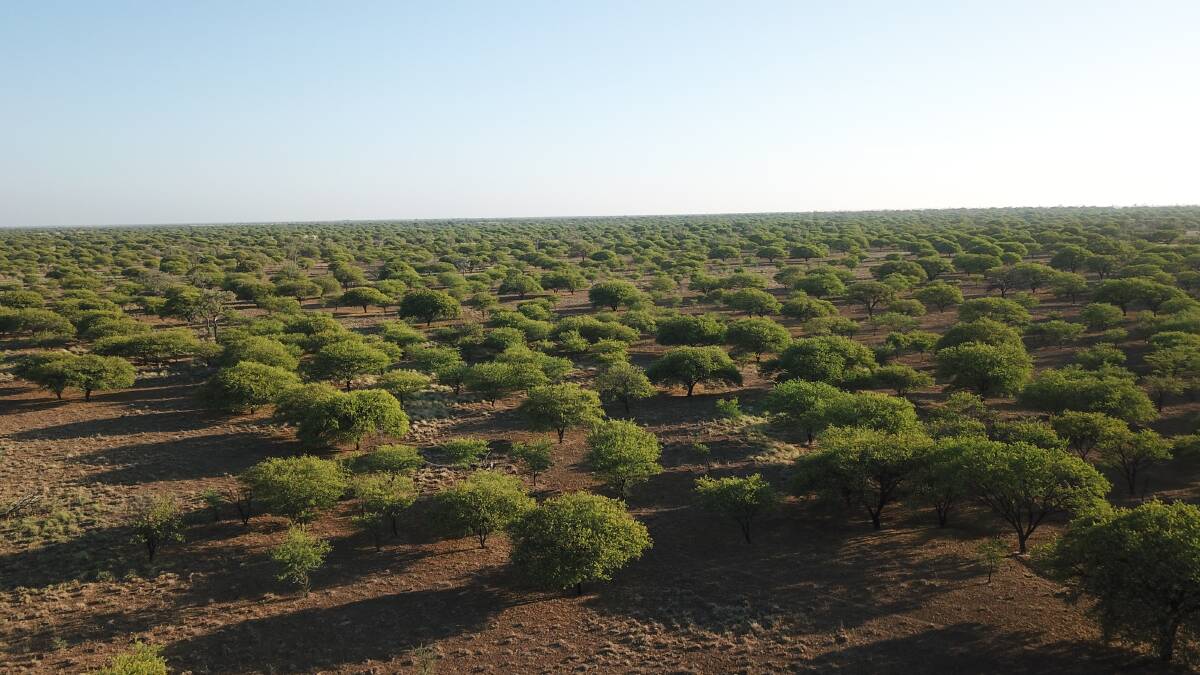
Renewable energy company Green Day Energy has joined forces with the Richmond Shire Council and CQUniversity to design, construct and commission a biomass plant in the Richmond shire, using prickly acacia as its raw material.
Company founder Brad Carswell told a Local Government Association of Queensland natural resource management forum in Richmond on Tuesday that it would deliver an economic solution to the environmental damage caused by prickly acacia in north west Queensland.
The project would develop a new industry in the region and create an estimated 50 new jobs.
A Memorandum of Understanding was signed on Tuesday between the Richmond Shire Council and Green Day Energy to utilise all prickly acacia bushes across the 10,000ha 20 Mile reserve and town common with the intention of returning it back to its natural state of Mitchell grasslands over the next five years.
Mr Carswell announced in September last year that his company had successfully developed a torrefaction process that turns the invasive weed into a carbon-neutral alternative to coal, for use in cogeneration power plants.
He said on Tuesday the company's products were in the final testing stages for use in large scale kiln and furnace environments, and they were confident that when fully assessed, they will have created biomass that was carbon neutral, or in the case of biochar, carbon negative.
He said Green Day Energy had undertaken high level discussions with an intensive-energy end user, but were operating under a non-disclosure agreement that prevented him from revealing who that was.
"In this part of the world prickly acacia is continuing to spread to every point on the compass and while many attempts have been made to slow down or stop its spread, it remains an environmental and economic problem of enormous proportions," he said.
"The best way to address an environmental problem is to find an economic solution.
"We can continue to have governments of all stripes spend tens of millions of dollars trying to contain it, and many landholders do their best with limited time and resources available to them, but only a sustainable economic solution will provide the long term impetus to try and solve this problem."

Richmond Mayor John Wharton welcomed the announcement for the town and the region.
"I strongly support this project, the direct jobs it will bring to the region and the economic and social benefits that will flow from it," he said. "Projects like this need as much support as possible from all levels of government to ensure that we can capitalise on the resources we have in our region."
RELATED: WOWW work wows weed symposium
The proposed plant will be capable of producing 100,000 tonnes per annum of biomass, requiring 300,000 tonnes of raw material, which equates to the removal of over one million prickly acacia plants every year.
Mr Carswell said several sites in Richmond had been identified as being suitable for the processing hub, and they were hoping to sign landholders up to access product on their land.
People would be employed either in field activities - large scale felling, chipping and removal of prickly acacia from infested land - or in the 24/7 manufacturing operation.
"We see no reason why this cannot be replicated in the towns of Hughenden and Julia Creek and we look forward to the day we can do that," Mr Carswell said.
He added that CQUniversity's role as a project partner would be to undertake research and development activities to ensure that best practise harvesting and land co-regeneration is utilised.
It would also assess and advise on the process and product development including sample testing, analysis and evaluation.
"This will ensure that we can develop a long term industry in the region that will produce sustainable social, agricultural and environmental benefits," Mr Carswell said.
In anticipation of the finalisation of a commercial supply agreement, Green Day Energy has begun its capital raising for the project.
Mr Carswell said the commitments to date could see it begin as soon as July this year.
Green hydrogen
He also announced that through a process of "pressure swing adsorption", the company had developed a method, which is patented, that can produce 200kg of green hydrogen from every tonne of biochar.
"That is, from 100,000 tonnes of biochar is the ability to produce in excess of 20 million kilograms or 20,000 tonnes of green hydrogen," he said.
"Now, this would require another process component and an expansion of our proposed plant.
"We will require government support and we know that it is out there.
"The Queensland government has just committed $29 million to construct a hydrogen plant in Chinchilla that will produce 50,000kg of hydrogen a year.
"We are talking 20 million kilograms and need only a fraction of the support.
"The federal government has a $1.4 billion hydrogen hub facility but so much of the money granted to date is going on feasibility studies and the like.
"We are confident that with the right support from all levels of government we can be standing here in two years time and watching the first bulk shipment of green hydrogen leave Richmond."
Traeger MP Robbie Katter added his support to Mr Carswell's funding call.
"I've said it many times that prickly acacia is the cane toad of woody weeds.
"We now have a viable, shovel-ready project that will see the creation of a biomass and green hydrogen hub in north west Queensland.
"It's now time for the government to get on board and back this project."
ALSO IN THE NEWS:
Want daily news highlights delivered to your inbox? Sign up to the Queensland Country Life newsletter below.


